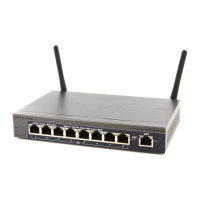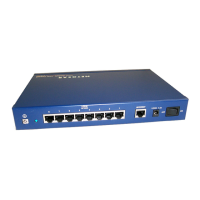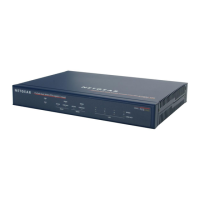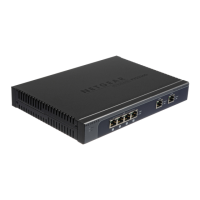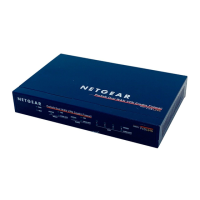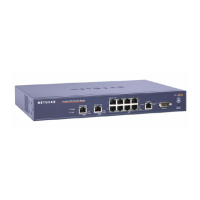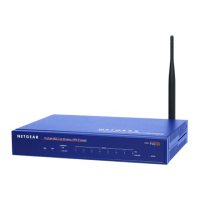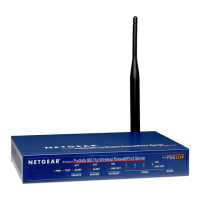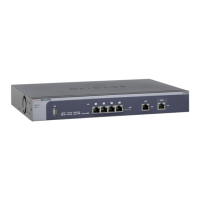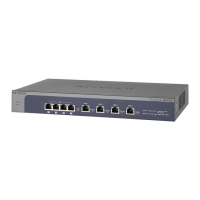Firewall Protection
126
NETGEAR ProSAFE VPN Firewall FVS318G v2
About Firewall Protection
A firewall protects one network (the trusted network, such as your LAN) from another (the
untrusted network, such as the Internet), while allowing communication between the two. You
can further segment keyword blocking to certain known groups. For information about how to
set up LAN groups, see Manage IPv4 Groups and Hosts (IPv4 LAN Groups) on page
71.
For IPv4, a firewall incorporates the functions of a Network Address T
ranslation (NAT) router,
protects the trusted network from hacker intrusions or attacks, and controls the types of traffic
that can flow between the Internet, DMZ, and LAN. Unlike simple NAT routers, a firewall uses
a process called stateful packet inspection to protect your network from attacks and
intrusions. NAT performs a limited stateful inspection in that it considers whether the
incoming packet is in response to an outgoing request, but true stateful packet inspection
goes far beyond NAT.
For IPv6, which in itself provides stronger security than IPv4, a firewal
l in particular controls
the exchange of traffic between the Internet, DMZ, and LAN.
Administrator Tips
Consider the following operational items:
1. As an option, you can enable remote management if you must manage
distant sites
from a central location.
For more information, see Configure Authentication Domains, Groups, and Users on
p
age 287 and Configure Remote Management Access on p
age 328.
2. Although
rules are the basic way of managing the traffic through your system (see Overview
of Rules to Block or Allow Spec
ific Kinds of Traffic on page 127), you can further refine your
control using the following features and capabilities of the VPN firewall:
• Groups and hosts. See
Manage IPv4 Groups and Hosts (IPv4 LAN Groups) on
page 71.
• Services. See
Outbound Rules on page 128 and Inbound Rules on page 130.
• Schedules
. See Set a Schedule to Block or Allow Specific Traffic on page 195.
• Allowing or blocking sites. See Configure Con
tent Filtering on page 189.
• Source MAC filt
ering. See Enable Source MAC Filtering on page 196.
• Port triggering. See
Configure Port Triggering on page 206.
3. Some firewall settings might affect the performance of the VPN firewall.
For more information
, see Performance Management on p
age 320.
4. The firewall logs can be configured to log and then email denial
of access, general attack,
and other information to a specified email address.
For information about how to configure logging and notifications, see
Configure Logging,
Alerts, and Event Notifications on pag
e 353.
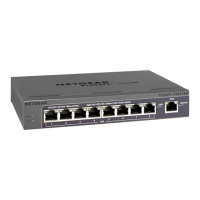
